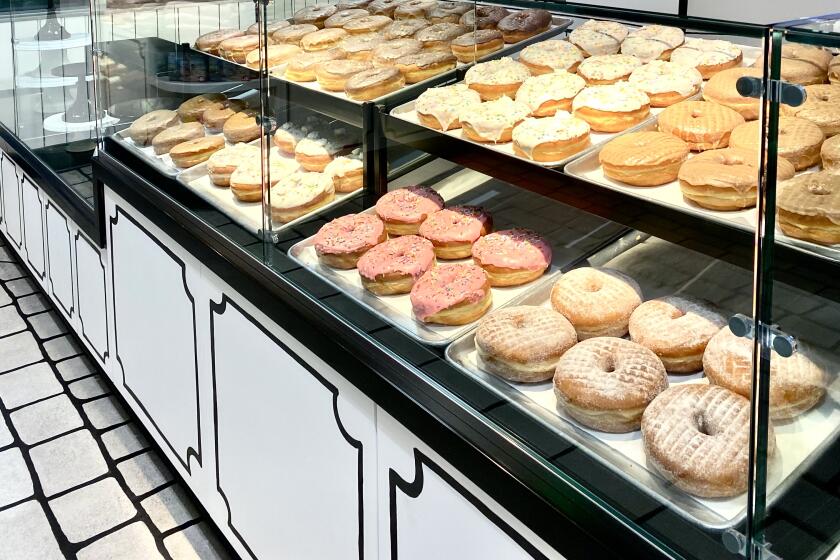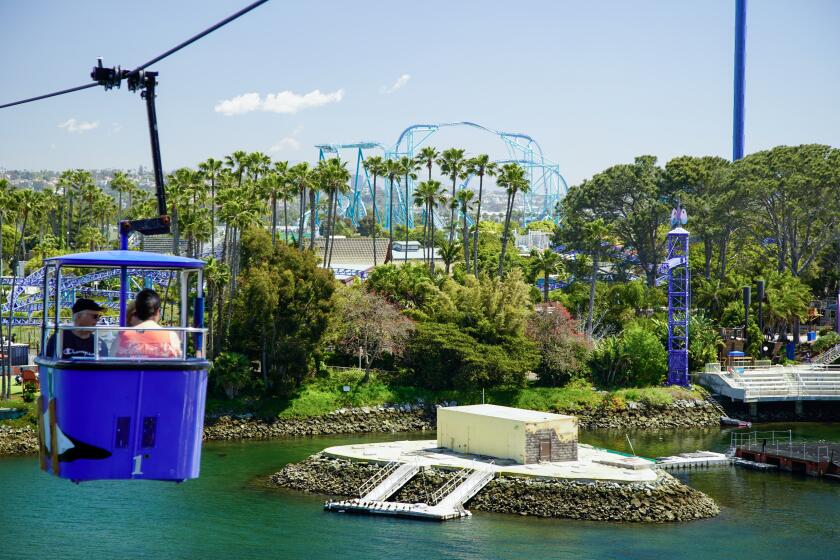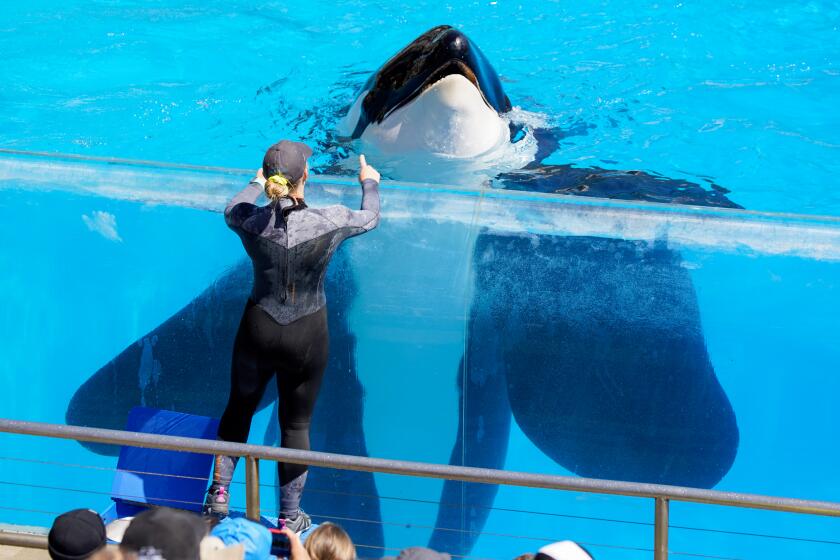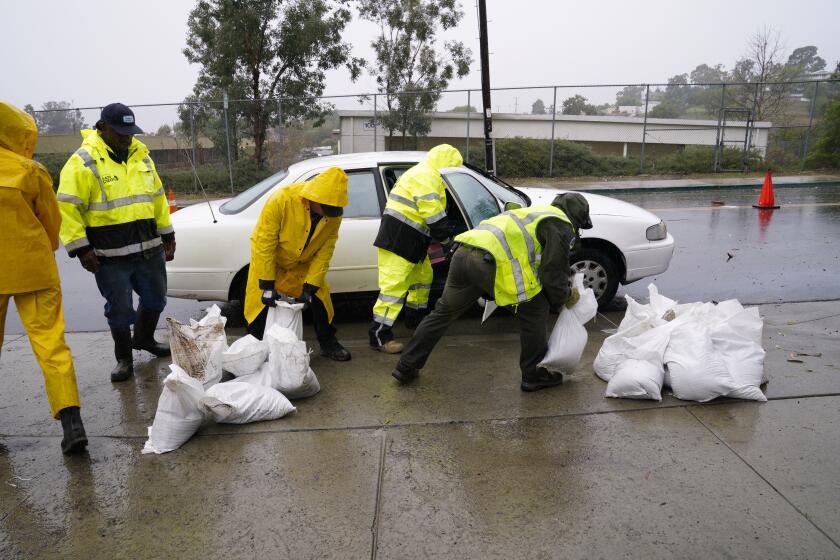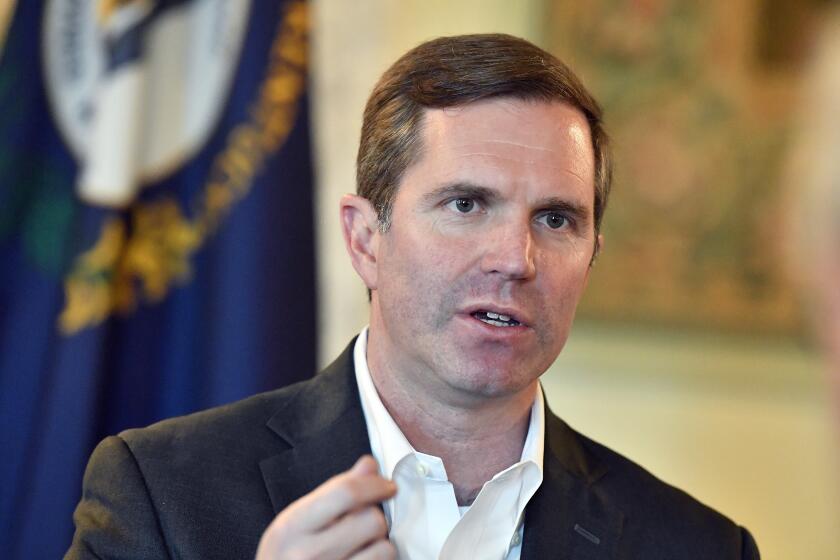Tourists slowly returning to San Diego, but recovery from pandemic still years off
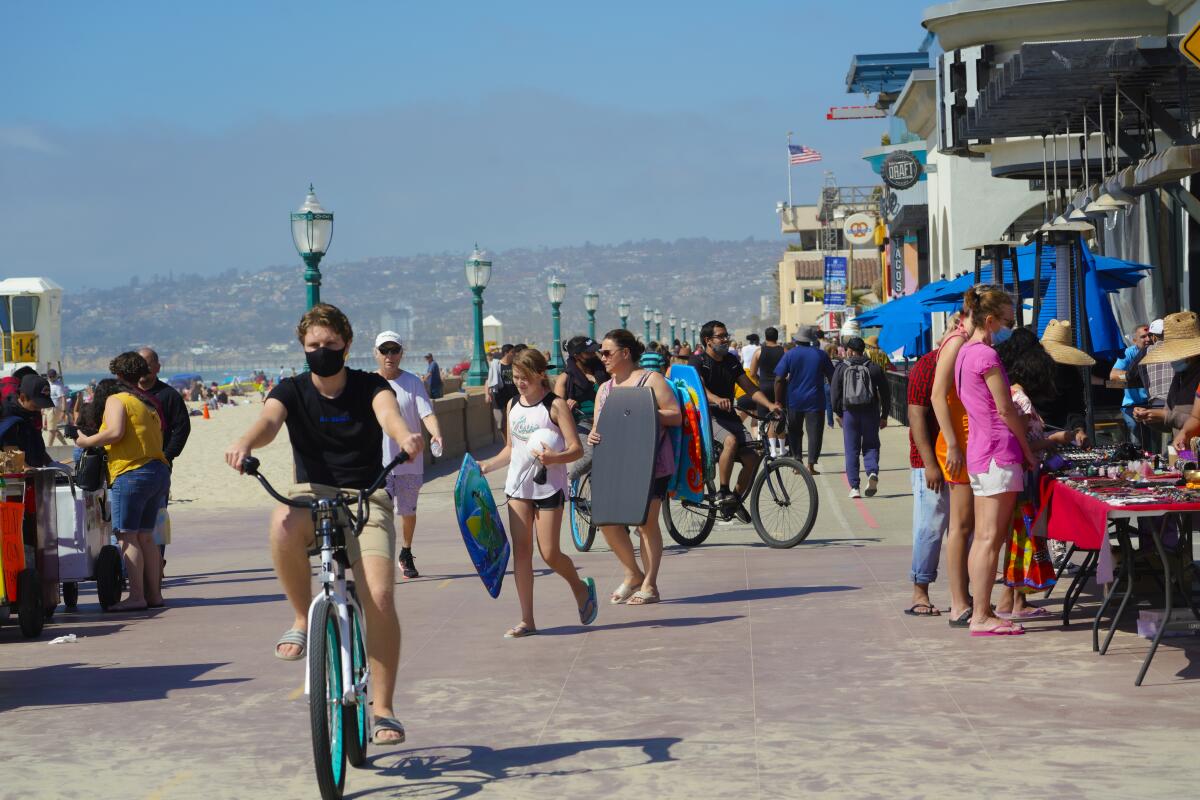
New forecast predicts a 74 percent increase in visitors this year, but the overall number of expected tourists still falls far short of the county’s record-breaking visitation in 2019
Last September, when San Diego was in the grip of an increasingly crushing pandemic, tourism officials warned elected leaders that the region’s normally robust visitor industry remained mired in a deep depression with few hopeful signs of a near-term recovery.
More than seven months later, those same tourism officials, buoyed by a just-released economic forecast, are feeling considerably less glum as they prepare for a recovery that is expected to deliver 10 million more visitors to the county this year than in 2020. While a full rebound is still years off, the prospects for 2021 are much brighter than what was expected even a few months ago.
In all, 25 million people — coming to the county for the day or overnight — are forecast to spend $7.6 billion on hotels, restaurants, shopping and attractions this year. That’s a vast improvement over 2020 when visitor spending was a mere $5.2 billion, a new low that hadn’t been seen since 2001 when spending by tourists was last in the $5 billion range, according to the San Diego Tourism Authority.
“Last year, I definitely was not optimistic because we weren’t seeing signs of state guidelines giving us clear direction on what to plan for,” said Julie Coker, CEO of the Tourism Authority. “So the forecast kept sliding backward. Also, you saw a spike in cases last fall so we would go from red tier to purple tier and back to red. As the vaccinations started rolling out and there was this unified message of how we could get out of this, that’s when things started turning around.
“So now I’m extremely upbeat about the forecast, and the lifting of restrictions (in mid-June) all trends for us heading into a positive direction.”
Tourism leaders, though, aren’t exactly giddy over what the future, in the short term, portends. This year’s forecasted numbers still fall far short of San Diego’s record-breaking, pre-pandemic performance in 2019 when the county saw more than 35 million visitors. One of the bigger unknowns is how quickly San Diego will see a return of larger conventions and meetings, which are a staple of the local tourism economy, which currently employs more than 137,000.
The losses from the meetings sector alone were staggering, as San Diego’s waterfront convention center was transformed first into a homeless shelter for much of 2020 and more recently as a place to house migrant youth. Dozens of canceled conventions, which would have drawn 1.1 million attendees in normal times, cost the region more than $1.2 billion in direct spending. Although the Tourism Authority knows of no hotels that permanently shuttered as a result of the pandemic, there were many small businesses that permanently closed because of the loss of tourism traffic, says Kerri Kapich, chief operating officer of the visitors bureau.
“We lost almost 20 years of economic benefit to the community,” Kapich said of the overall downturn in tourism. “We’ll make it back, but that is the significance of what happened. It was nine times the impact of 9/11. There are businesses that have closed and will never reopen. Folks have been hanging on for over a year. That’s a loss we just don’t know.”
Tourism Economics, a research firm that prepared the latest forecast for the Tourism Authority, points out that while total visitation this year is expected to be 29 percent below what was seen in 2019, when viewed through the lens of 2020’s “low watermark,” it represents a stunning 74 percent growth rate.
Overall visitation will grow by an additional 38 percent in 2022, but the volume of overnight visitors won’t return to pre-pandemic norms until 2024, the report concludes. That’s also true for visitor spending, which is forecast to reach $11.9 billion in 2024, the first year that expenditures by out-of-towners are expected to exceed the $11.6 billion that flowed into the economy in 2019.
The authors of the forecast offer a caveat, given the still uncertain trajectory of the coronavirus and the return of convention business.
“At this point, there continues to be a high level of uncertainty around the extent and duration of disease suppression measures, and the impact on group events,” states the forecast. “The impact and subsequent recovery could prove quite a bit stronger or weaker than anticipated in this outlook.”
In a move to jumpstart travel to San Diego, the Tourism Authority is launching an $8 million marketing campaign starting in July and running through December focused largely on the Western states. The theme is “Happiness is calling you back,” and advertising will be on various digital platforms, social media and also on broadcast and online television. Also planned to debut this summer is a new advertising campaign targeting the meetings market.
In a bit of good news for the convention center and the hotels that rely on large meetings, there remain on the books this year close to 30 conferences and events between August and December, including a few medical conventions that are typically lucrative revenue generators for the region in terms of attendee spending. That includes Comic-Con, which is planning to stage a smaller in-person gathering in late November. What’s unknown, though, is how many people will feel confident enough to show up to any of these planned conventions.
One encouraging sign, says Coker, is that the American Academy of Orthopaedic Surgeons, whose convention is scheduled for early September, has sold out its trade show floor. Whether it can reach its normal pre-pandemic attendance of 25,000, though, is much less certain, although the association is hopeful.
“Our registration just opened so we’re excited about the possibility of reaching pre-pandemic numbers,” said Susan McSorley, vice president of live events for the orthopedic surgeons group, which had originally been scheduled for March of this year but because of the pandemic and the ever-changing guidelines for meetings in California, was pushed back to Aug. 31- Sept. 3. “Our members are interested in coming and they know how important the meeting is. We’re optimistic we’ll have a great attendance at this meeting.”
“We do understand many of our international members may not be able to attend this year so we do offer a product to get that content. But registration just opened and we’re still monitoring this.”
California’s current color-coded, tiered system for business re-openings is scheduled to go out of existence come June 15, although for conventions, some restrictions will remain, among them a cap on attendance at 5,000 unless testing or vaccination status is verified for all attendees. That condition will be in place until Oct. 1, as will a requirement that all international attendees be fully vaccinated.
Downtown San Diego hotels like the Manchester Grand Hyatt, which is San Diego’s largest convention hotel, have been especially hard hit, having lost business because of canceled conventions at the center but also because of meetings and events that would normally be held at its own hotel.
For much of the year, just one of the Hyatt’s two towers has been open for business but more recently, both are being used on the weekends when there’s more leisure business, said Daniel Kuperschmid, general manager of the 1,628-room Hyatt.
“For the next two months, we don’t have much meetings business, just little corporate groups for 20 or 30 people. That business went to other cities and states,” he said. “We are expecting June, though, to be pretty good with larger groups of 500 or so. We began to turn a profit at the back end of the year, which is really good news, and our owners (Host Hotels & Resorts) have been incredibly supportive through this whole process.”
While he’s optimistic about the latter half of the year as conventions and trade shows gradually return, he’s unsure of how comfortable conventioneers themselves will be returning this year, with pandemic fears of the last year still fresh in their minds.
“By 2022, we’ll probably be at 80 percent of where we were pre-pandemic,” he said. “I hope I’m right on that. What remains to be seen is how many are ready to get on a plane, and people’s anxiety levels are different within each group.
“What I’ve heard planners say is we will continue to do hybrid and it’s probably here to stay but a lot believe they’ll grow the attendance of those who used to not attend in person.”
Get U-T Business in your inbox on Mondays
Get ready for your week with the week’s top business stories from San Diego and California, in your inbox Monday mornings.
You may occasionally receive promotional content from the San Diego Union-Tribune.

